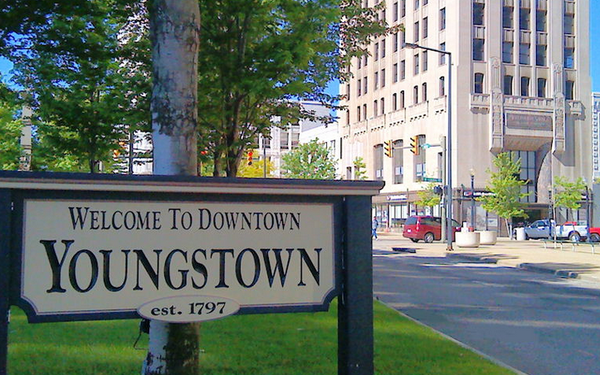Youngstown is a town located on the Mahoning River, roughly 65 miles (105 kilometers) southeast of Cleveland. It has 66,982 inhabitants and is considered the 9th-largest city in the state of Ohio.
Here’s a quick look at this town’s history from its early days up until modern times:
Town’s Founding
The city of Youngstown got its name from John Young, a man from Whitestown, New York. He settled in this area in 1796 and, on the 9th of February 1797, he bought the township of more than 15,000 acres from the Western Reserve Land Company. The price was above 16 thousand dollars. John is also credited with building the first gristmill and sawmill in the town. The establishment of the settlement was formally registered in 1802.
At first, most of the town’s settlers were from Connecticut, but soon many Scots and Irish from nearby Pennsylvania began to flood the city. In 1800, due to the increasing population of the Western Reserve, the Trumbull county was created by Arthur St. Clair. Thirteen years later, in 1813, this county was split into a couple of townships and the Youngstown Township was among them. It included much of the present-day’s Mahoning County. Youngstown’s village was incorporated in 1848. After nearly 30 years, in 1876, it became the Mahoning County’s seat and it remains one to this day.
Golden Era
In the early 19th century, a large amount of coal was discovered near Youngstown. This spurred the town’s economic growth and the town was included in the famous Erie Canal’s network. The railroad arrived in the city in 1856, and Youngstown’s economy was booming. Many immigrants began to come to town. People from Germany, Ireland, and Wales comprised the first wave of immigration. In the late 19th-century, steel mills were established. This brought in another wave of newcomers from Greece, Italy, Eastern Europe, but also African Americans from within the United States.
In the 1920s, these changing demographics of the town caused a backlash from the local population. The situation went out of control in 1924, with street fights happening between the members of the clan and Irish and Italian Americans. Governor of Ohio had to declare martial law. After 1928, the clan was in a sharp decline and, three years later, they sold their meeting area.
Iron ore deposits were running low in the early 20th century. Youngstown was landlocked and this was a huge disadvantage when compared to the neighboring cities. The town’s economy slowly started to decline.
After World War II and Modern Times
Youngstown’s steel industry was still massive after World War II, and this attracted numerous workers to settle in the town. The Latino population in the city witnessed significant growth. In the 1970s, the city’s industry, which was responsible for the increasing population, collapsed. The town had to take a bunch of steps to transform its economy.
At the start of the new century, Youngstown went through the changing of the city’s infrastructure. In 2005, buildings in the city’s downtown area experienced a lot of adjustments. Some were demolished while others underwent a lot of restoration. In an attempt to change the community’s image, the town’s government started an enthusiastic urban rejuvenation plan called “Youngstown 2010”. This plan’s purpose was to make Youngstown more modern and organized. In 2007, the project received an award for its efforts from the American Planning Association.


0 Comments